Lecture 6
主流 ISA
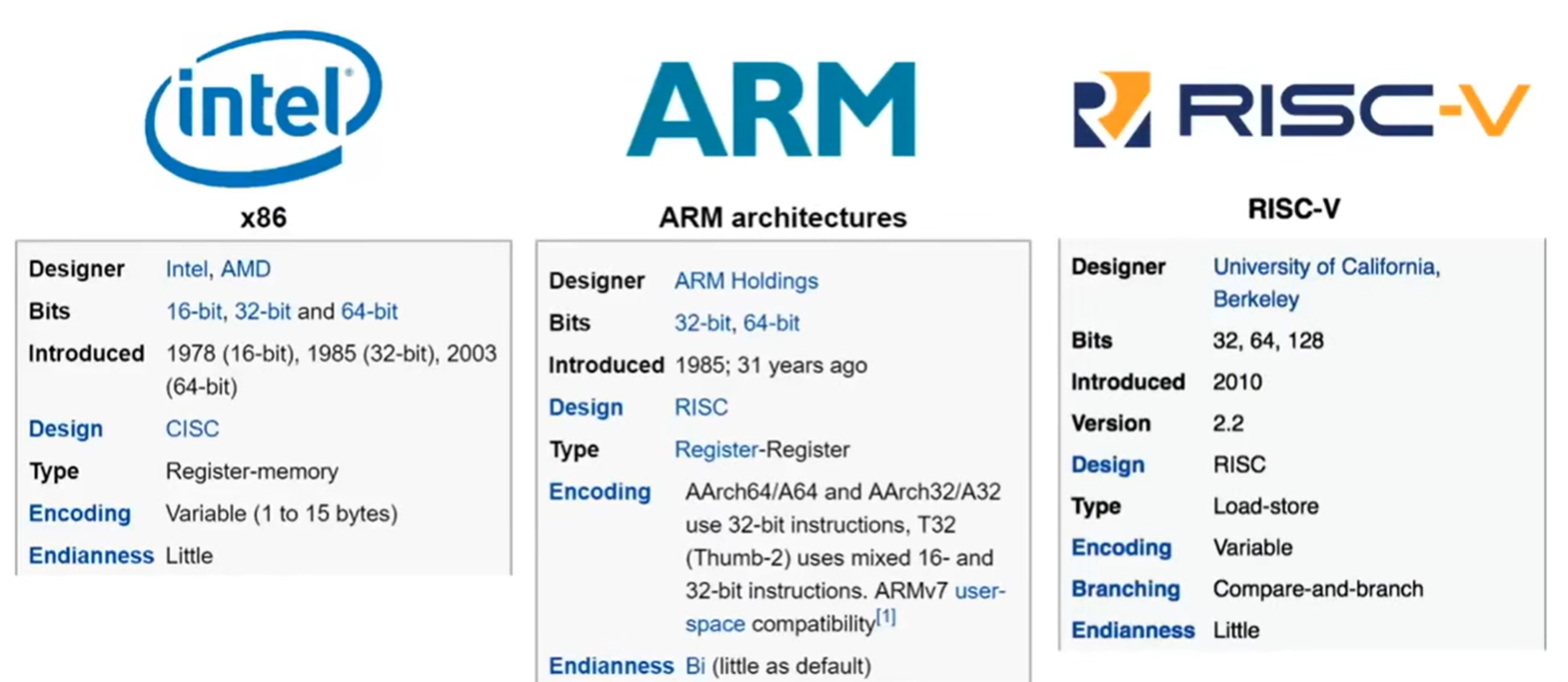
Register
汇编语言没有变量。它用寄存器来存储值。
寄存器是固定大小的小内存(32 位或者 64 位)。可以进行读取和写入,但是有数量限制,它们很快并且耗电少。
Registers vs. Memory
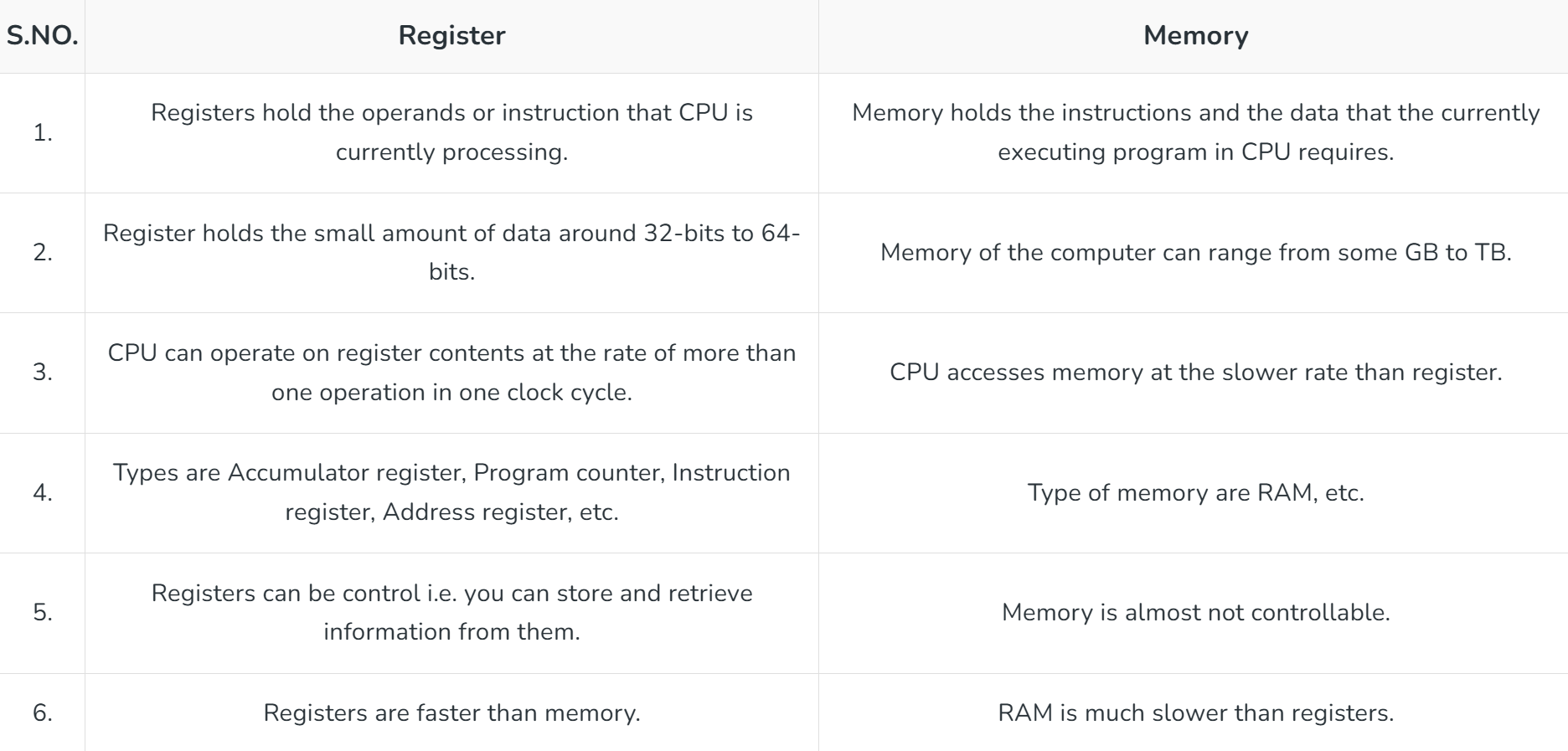
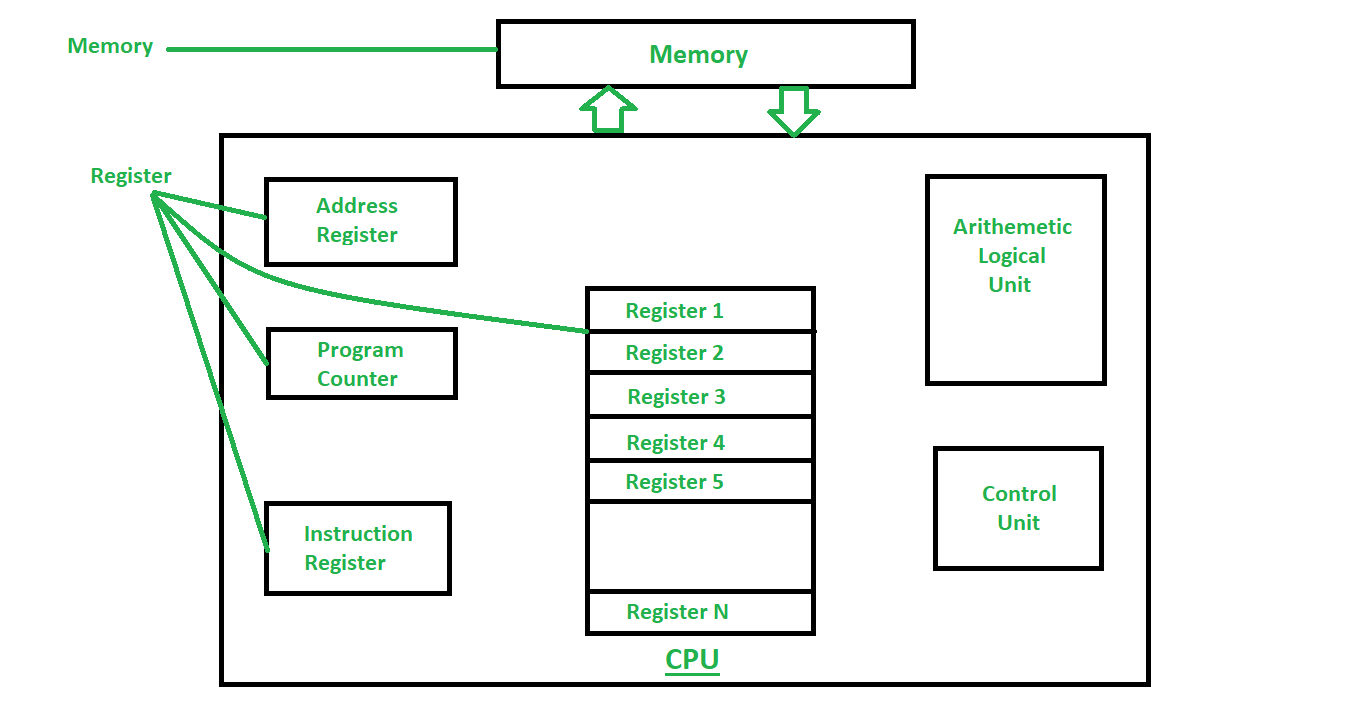
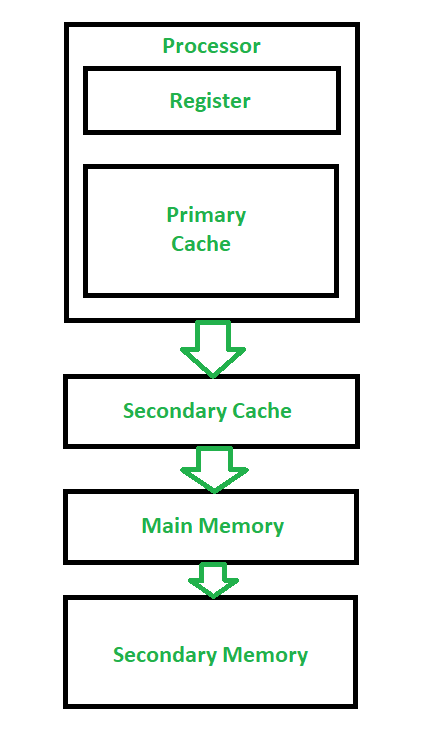
What if more variables than registers?
如果变量多于寄存器数量,我们选择将最常用的变量存储到寄存器中,然后将其余的存储到内存中。(称为 spilling to memory)
Why are not all variables in memory?
寄存器比内存快 100-500 倍。
Locality Memory Hierarchy

RISCV
RISC V 有 32 个寄存器,从 x0 到 x31。
每个寄存器都是 32 bits wide and holds a word(a fixed size piece of data that handles as a unit by the instruction set or hardware of the processor, a word is defined as the size of a CPU’s registers).

s 开头的寄存器称为 safe registers,它们用来保存编程变量。
t 开头的寄存器持有临时变量。
The Zero Register
x0(zero) 永远有值 0 并且不能被改变!任何对 x0 寄存器的写入操作都无效。
Registers in a Computer
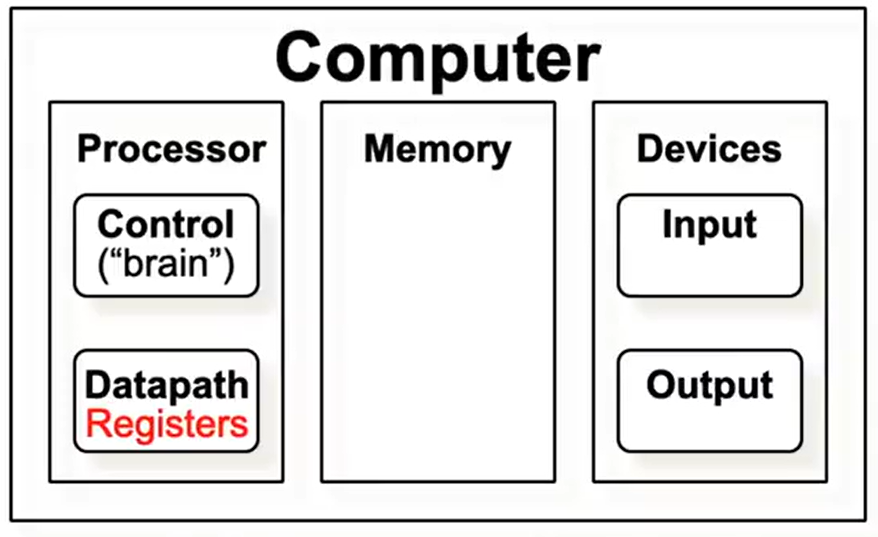 ## RISCV Instructions ```assembly op dst, src1, src2 ``` op: operation name dst: register getting result src1: first register for operation src2: second register for operation
## RISCV Instructions ```assembly op dst, src1, src2 ``` op: operation name dst: register getting result src1: first register for operation src2: second register for operation
汇编指令和 C 相关(=, +, -, *, /, &, |, etc)
main: add t0, x0, x0
# op dst1 src1 src2
# 将 x0 和 x0 寄存器内容相加,结果存入 t0 寄存器中
Integer Addition(add)
在 C 语言中:
a = b + c;
在 RISCV 中:
add s1, s2, s3 # s1 = a
Integer Subtraction(sub)
在 C 语言中:
a = b - c;
在 RISCV 中:
sub s1, s2, s3 # s1 = a, s2 = b, s3 = c
RISCV Instructions Example
假设 a -> s0, b -> s1, c -> s2, d -> s3, e -> s4。将 a = (b + c) - (d + e) 转换为 RISCV。其中,t1 和 t2 是存储临时变量的寄存器。
add t1, s1, s2 # t1 = b + c
add t2, s3, s4 # t2 = d + e
sub s0, t1, t2 # s0 = t1 - t2 = (b + c) - (d + e)
Immediates
Immediates: Numerical constants
opi dst, src, imm
操作的名称结尾加个 ‘i’。
Immediates 可以达到 12 bits
addi s1, s2, 5 # a = b + 5
addi s3, s3, 1 # c 存储在 s3 中,相当于 c ++
假设 a -> s0, b -> s1, 将 a = (5 + b) - 3; 转换为 RISCV
addi t1, s1, 5 # t1 = 5 + b
addi s0, t1, -3 # a = t1 - 3
Data Transfer
Data Transfer instructions are between registers(Datapath) and Memory. Allow us to fetch and store operands in memory.
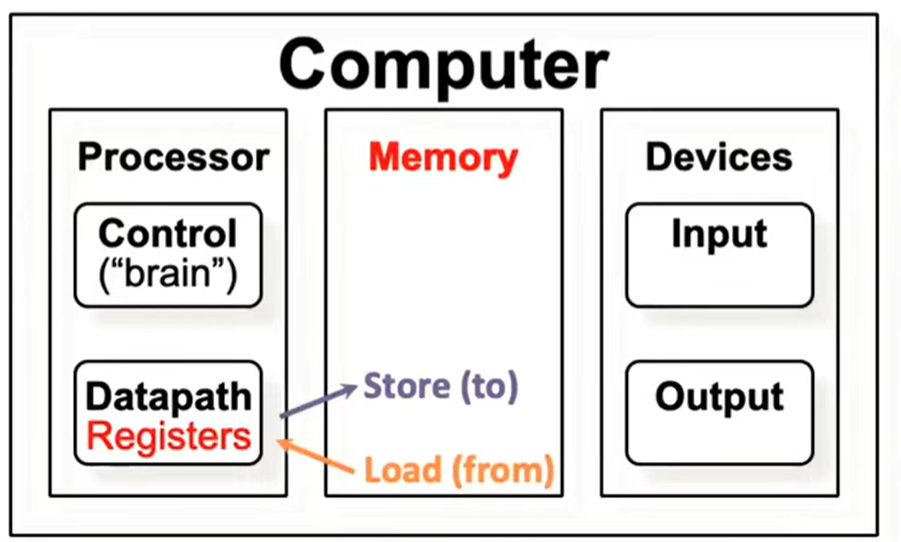
memop reg, off(bAddr)
- memop: operation name(“operator”)
- reg: register for operation source or destination
- bAddr: register with pointer to memory(“base address”)
- off: address offset(immediate) in bytes(“offset”)
Access memory at address b A d d r + o f f bAddr + off bAddr+off
Memory is Byte-Addressed
不同系统下 word 和 Byte 和 bit 的关系
| 系统 | 字 | 字节 | 位 |
|---|---|---|---|
| 16位 | 1 word | 2 Bytes | 16 bits |
| 32位 | 1 word | 4 Bytes | 32 bits |
| 64位 | 1 word | 8 Bytes | 64 bits |
| Memory addresses 由 byte 而不是 word 来索引 | |||
| Word addresses 每个相隔 4 Bytes(32 位系统下) | |||
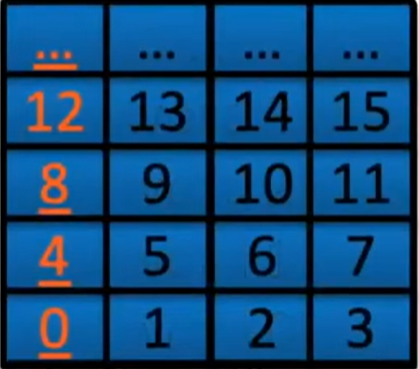 |
Data Transfer Instructions
Load Word(lw)
-Takes data at address b A d d r + o f f bAddr + off bAddr+off FROM memory and places it into reg.
Store Word(sw)
-Takes data in reg and stores it TO memory at address b A d d r + o f f bAddr + off bAddr+off
example
address of int array[] -> s3, value of b -> s2,
array[10] = array[3] + b;
转换成 RISCV
lw t0, 12(s3) # t0 = A[3]
add t0, s2, t0 # t0 = A[3] + b
sw t0, 40(s3) # A[10] = A[3] + b
Values can start off in memory
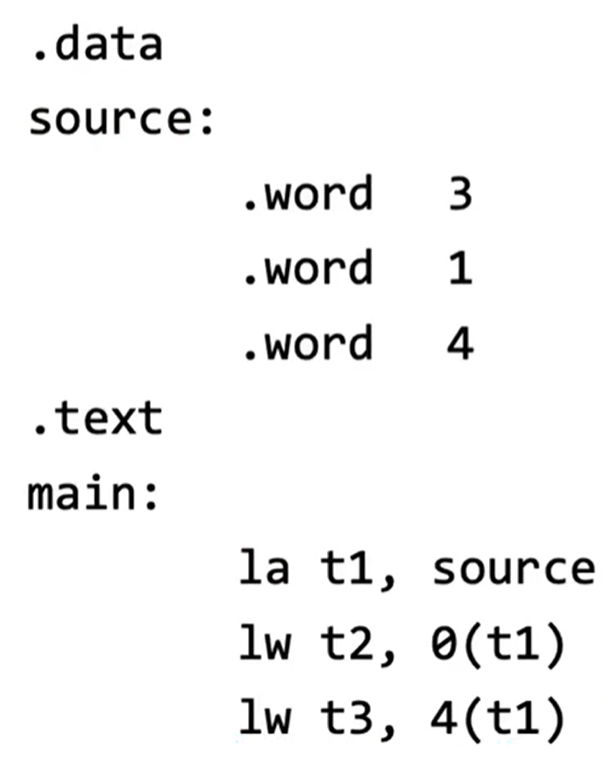 $.data$ 指定了数据的存储位置。 $.text$ 指定了代码的存储位置。 ## Endianness  **RISC-V 是 Little Endian** ## Sign Extension ### Sign Extend Take the most-significant bit and copy it to the new bits $$ 0b~~11 = 0b~~1111 $$ ### Zero/One Pad Set the new bits with one/zero. $$ \begin{aligned} Zero~~Pad:&0b~~11 = 0b~~0011 \\ One~~Pad:&0b~~11 = 0b~~1111 \end{aligned} $$ **RSIC-V 是 Sign extend** ## Byte Instructions
$.data$ 指定了数据的存储位置。 $.text$ 指定了代码的存储位置。 ## Endianness  **RISC-V 是 Little Endian** ## Sign Extension ### Sign Extend Take the most-significant bit and copy it to the new bits $$ 0b~~11 = 0b~~1111 $$ ### Zero/One Pad Set the new bits with one/zero. $$ \begin{aligned} Zero~~Pad:&0b~~11 = 0b~~0011 \\ One~~Pad:&0b~~11 = 0b~~1111 \end{aligned} $$ **RSIC-V 是 Sign extend** ## Byte Instructions
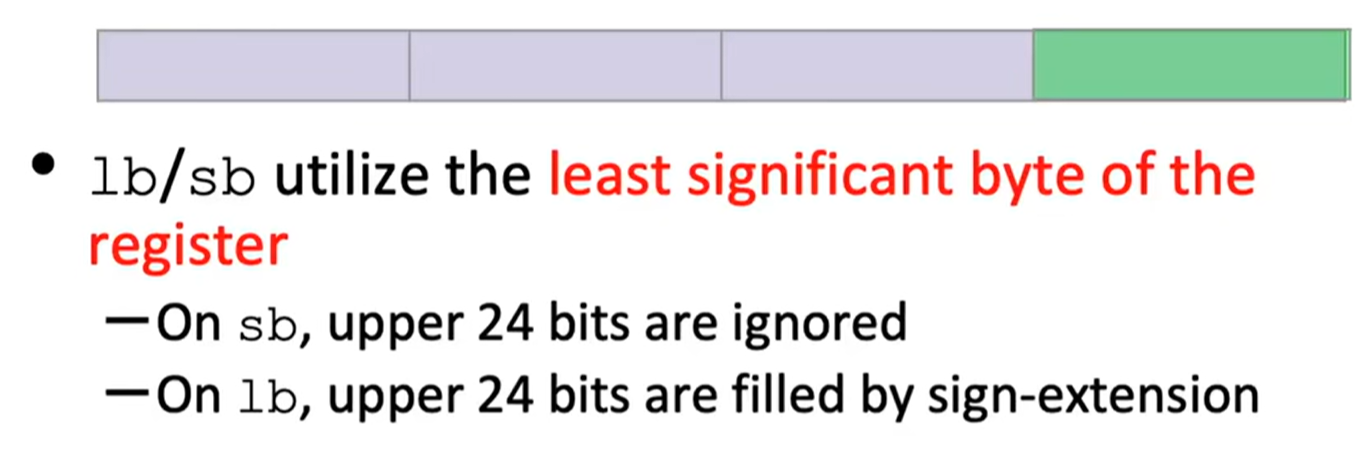 $s0 = 0x00000180$ ```assembly lb s1, 1(s0) # 获得 1 个字节,也就是 0x01,s1 = 0x00000001 lb s2, 0(s0) # 获取 0x80,s2 = 0xFFFFFF80 sb s2, 2(s0) # 从 s2 中取出最低 1 个字节,存储到 s0 第 3 个 字节的位置,*(s0) = 0x00800180 ``` ## Half-Word Instructions
$s0 = 0x00000180$ ```assembly lb s1, 1(s0) # 获得 1 个字节,也就是 0x01,s1 = 0x00000001 lb s2, 0(s0) # 获取 0x80,s2 = 0xFFFFFF80 sb s2, 2(s0) # 从 s2 中取出最低 1 个字节,存储到 s0 第 3 个 字节的位置,*(s0) = 0x00800180 ``` ## Half-Word Instructions
beq s0, s1, then
else:
sub s2, s3, x0 # x0 = 0, s2 = s3 - 0 -> a = b - 0 = b
j end
else:
sub s2, x0, s3 # x0 = 0, s2 = 0 - s3 -> a = 0 - b = -b
end:
C 语言代码
```c
if(i < j)
a = b; /* then */
else
a = -b; /* else */
RISC-V 代码:
# i -> s0, j -> s1
# a -> s2, b -> s3
bge s0, s1, else
then:
add s2, s3, x0
j end
else:
sub s2, x0, s3
end:
Instruction Addresses
指令作为数据存储在 memory 中并且有自己的地址。
Labels 会被转换为指令地址。
PC 会跟踪 CPU 当前执行的指令。
Control Flow Greencard Explanation
 imm 的第 0 位是 0,来保证它是偶数,这样 PC 的值总是会半对齐。 ## Shifting Instructions **Logical shift**:Add zeros as shift **Arithmetic shift**: Sign-extend as you shift,只对右移有效。
imm 的第 0 位是 0,来保证它是偶数,这样 PC 的值总是会半对齐。 ## Shifting Instructions **Logical shift**:Add zeros as shift **Arithmetic shift**: Sign-extend as you shift,只对右移有效。
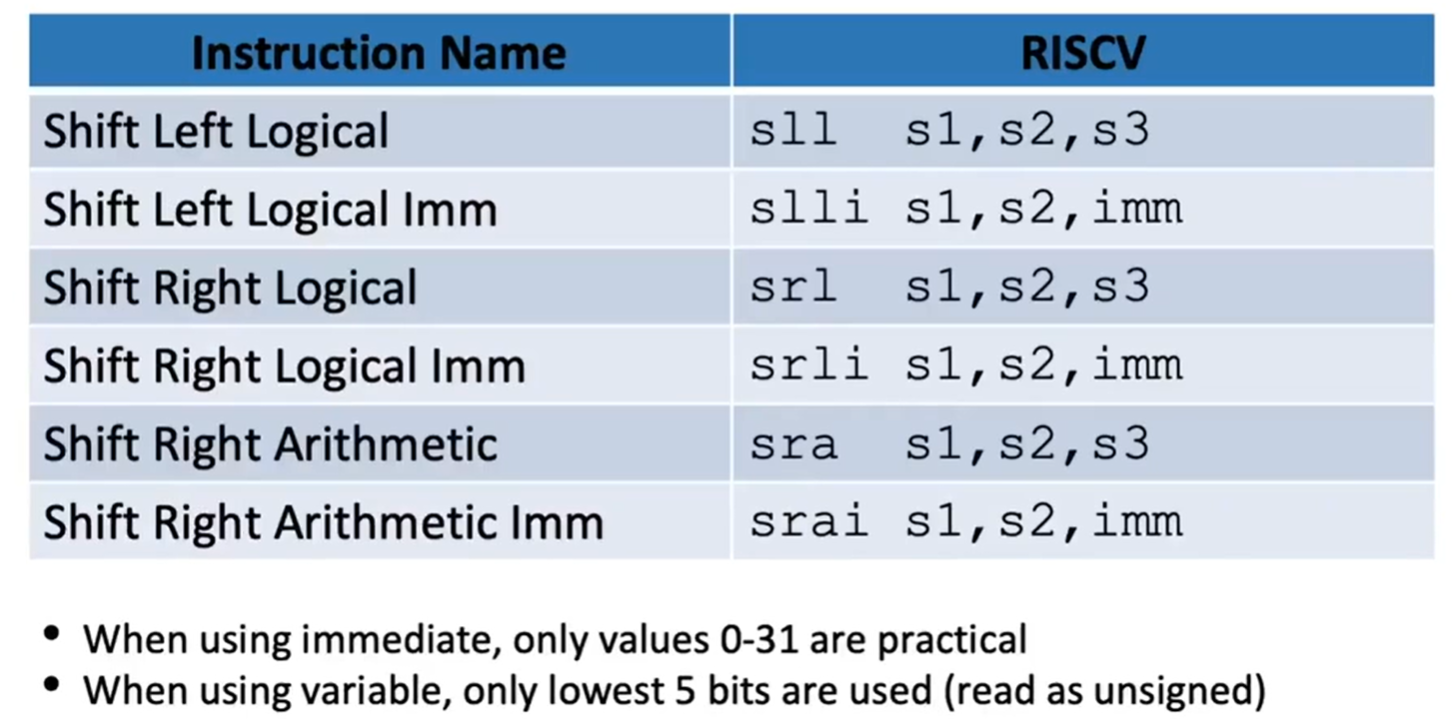

以下代码将 s1 的值存储到 s0 地址的第4个字节(最高字节)
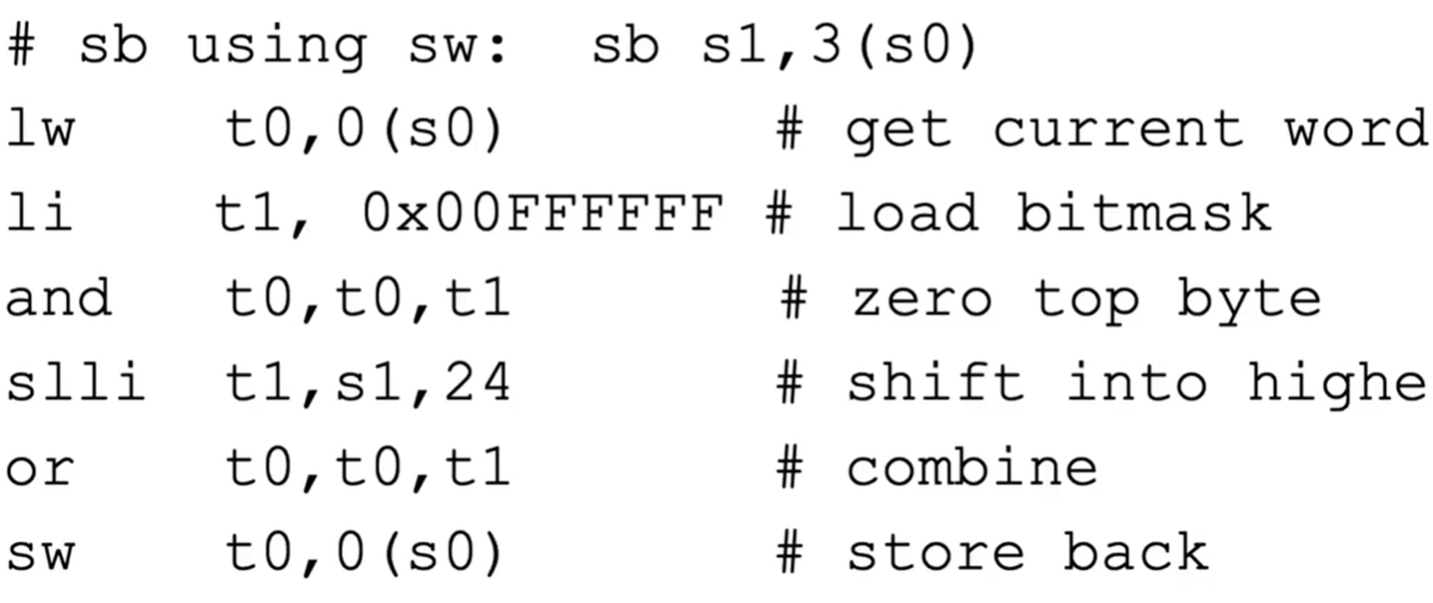
假设 s0: 0x12345678。s1: 0xAB
lw t0, 0(s0) 从 s0 地址读取当前值 0x12345678 到寄存器 t0,t0 = ‘0x12345678’。
li t1, 0x00FFFFFF 将立即数 0x00FFFFFF 加载到寄存器 t1。t1 = 0x00FFFFFF。
and t0, t0, t1 将 t0 与 t1 按位与,清除 t0 的最高字节。t0 = ‘0x12345678’ & ‘0x00FFFFFF’,最终 t0 = ‘0x00345678’(最高字节已经清零)
slli t1, s1, 24 将 s1 的值左移 24 位,将其移动到最高字节位置,也就是 0xAB << 24 -> t1 = 0xAB000000
or t0, t0, t1 将 t0 和 t1 按位或操作,合并新的最高字节。t0 = 0x00345678 | 0xAB000000,t0 = ‘0xAB345678’
sw t0, 0(s0) 将 t0 的值 0xAB345678 存储回 s0 地址,s0 = 0xAB345678
Arithmetic Instructions Myltiply Extension
Multiplication(mul and mulh)
s r c 1 × s r c 2 src1 \times src2 src1×src2:lower 32-bits through mul, upper 32-bits in mulh
mul dst, src1, src2
mulh dst, src1, src2
Division(div)
src1 / src2: quotient via div, remainder via rem
div dst, src1, src2
rem dst, src1, src2
Bitwise Instructions
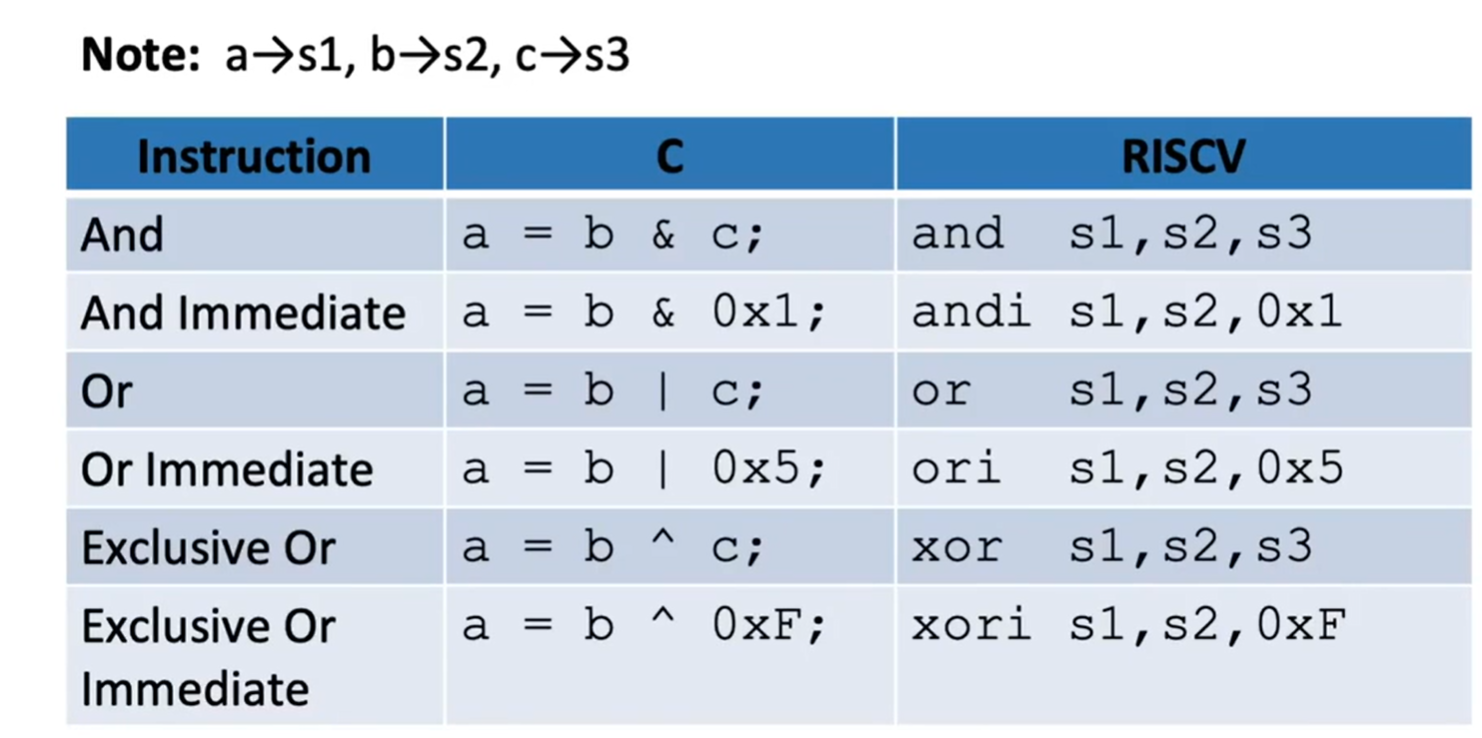
Compare Instructions
Set Less Than (slt)
If value in reg1 < value in reg2, dst = 1, else 0
slt dst, reg1, reg2
Set Less Than Immediate (slti)
If value in reg1 < imm, dst = 1, else 0
slti dst, reg1, imm






















 971
971

 被折叠的 条评论
为什么被折叠?
被折叠的 条评论
为什么被折叠?








